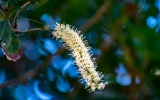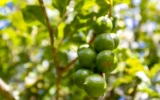When to Prune Macadamia Nut Trees
Macadamia trees typically don't require pruning to fruit, but tending to their branches can help manage their size and shape. If left unchecked, a macadamia tree can soar to heights of up to 10 meters over several decades, which might present difficulties for harvesting and yard space. For these practical reasons, knowing when and how to prune your tree is indispensable.
The ideal time to prune your macadamia nut tree is late winter, just before spring growth flush. This period is beneficial because the tree is still dormant, which minimizes stress and allows the tree to heal quickly as the growing season begins.
Pruning during this time also helps sunlight and air circulation reach the inner branches, encouraging robust new growth and a healthier tree that is more likely to produce abundant macadamia nuts. As you read further, you'll learn more tips on how to prune, whether young or old macadamia trees.
Knowing the proper pruning techniques and timing allows new macadamia farmers to shape and manage their trees right from the start for maximum health, productivity, and ease of management.
Summary
- Pruning during early spring can be beneficial, as it takes advantage of the period when the trees are transitioning out of dormancy, promotes quicker healing of pruning wounds, stimulates new growth, and helps in flowering and fruit production.
- Both late winter and early spring pruning allow for better visibility of the tree's structure, reduce stress on the tree compared to pruning during other times of the year, and help in shaping and training the tree's structure for better access and maintenance.
- Young macadamia trees should be shaped by creating a strong central leader and evenly spaced lateral branches while older macadamia trees may need more extensive pruning, including the removal of large, dead, or diseased branches, thinning out the canopy, and encouraging new growth to increase productivity and overall tree health.
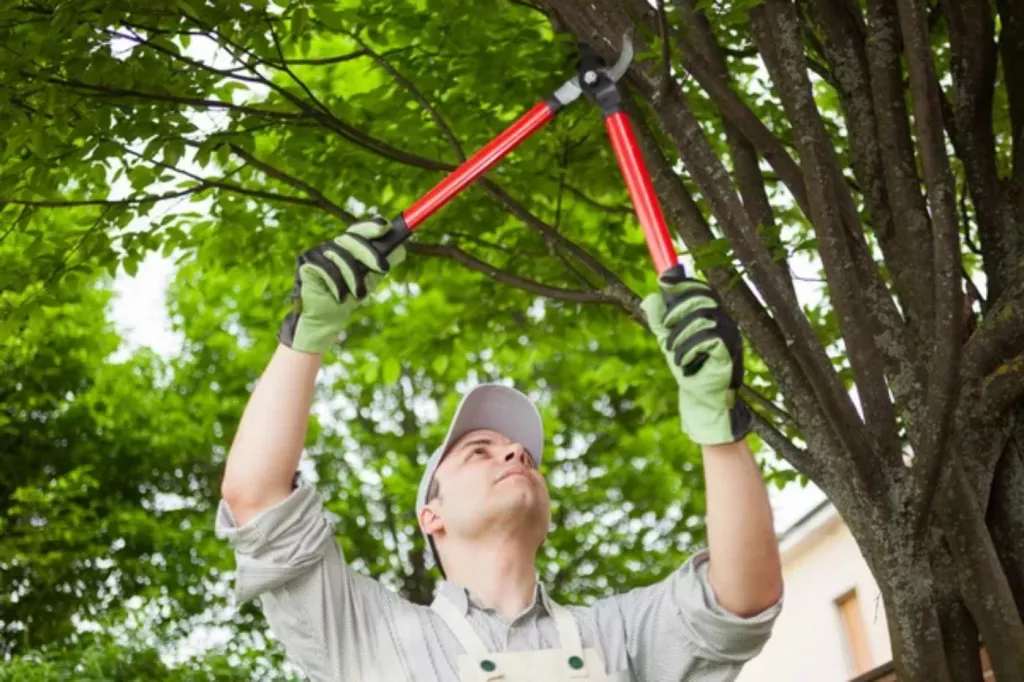
On this page:
The Ideal Time to Prune Macadamia Trees
The table below shows the ideal timing for pruning macadamia trees:
| Ideal Time To Prune Macadamias | Time of Year | Description |
|---|---|---|
| Late Winter | February and March | Pruning in late winter allows for the removal of dead or damaged branches before new growth begins. |
| Early Spring | March and April | Pruning in early spring promotes healthy new growth and helps maintain the tree's shape and size. |
You should prune macadamia trees during the winter
Pruning macadamia trees during late winter is considered ideal for several reasons:
This season is a period of dormancy
Late winter is a period of dormancy for many trees, including macadamias. During this time, the tree is not actively growing, and pruning can help stimulate new growth once spring arrives.
Additionally, pruning during late winter allows the tree to recover before the growing season begins, reducing the risk of stress or damage to the tree.
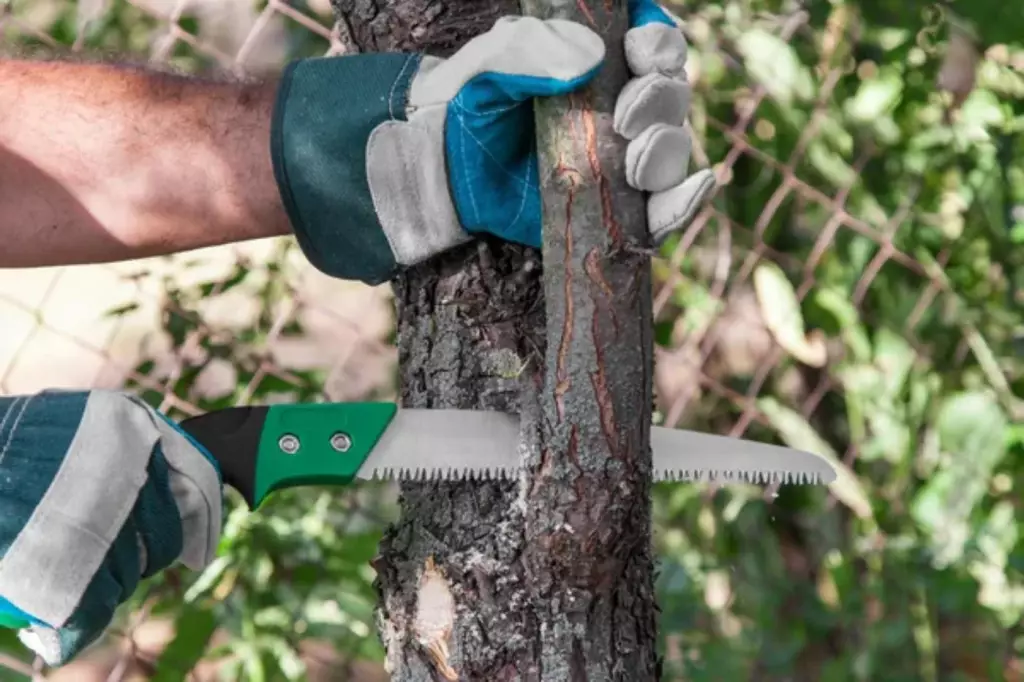
Pruning during late winter allows for better visibility
Pruning during late winter allows for better visibility of the tree's structure. With the leaves gone, it is easier to assess the overall shape of the tree and identify any dead, damaged, or diseased branches that need to be removed.
It helps reduce the risk of disease transmission
Pruning during the growing season can leave fresh wounds on the tree, making it more susceptible to infections. However, pruning during late winter gives the tree time to heal before pests and diseases become more active in the spring.
Pruning during late winter helps in size management and fruit production
By selectively removing branches, the tree can be trained to maintain a manageable size and shape, making it easier to harvest the nuts and ensuring that sunlight and air circulation reach all parts of the tree, leading to more uniform fruit development.
You can also prune macadamia trees during early spring
Pruning macadamia trees during early spring is considered ideal for several reasons:
Pruning macadamia trees in early spring takes advantage of the dormant period
Pruning macadamia trees in early spring takes advantage of the period when the trees are transitioning out of dormancy. This timing minimizes the risk of interrupting active growth and flowering, as the tree's energy is primarily directed toward root and trunk development rather than foliage growth.
Additionally, the mild weather of early spring promotes quicker healing of pruning wounds and stimulates new growth as the tree emerges from its dormant state.
Early spring allows the healing of wounds quickly
Pruning during early spring allows the tree to heal any wounds quickly. As the weather warms up, the tree's natural healing process is accelerated, reducing the risk of infections or diseases entering through the pruning cuts.
Pruning in early spring stimulates new growth
Pruning in early spring can stimulate new growth as the tree emerges from dormancy. Strategic pruning can encourage the development of new shoots and branches, leading to a more balanced and productive tree canopy.
This timing of pruning helps in flowering and fruit production
By pruning in early spring, the tree can allocate more energy towards flowering and fruit production. Removing dead or overcrowded branches can improve air circulation and sunlight penetration, promoting better flowering and ultimately higher yields.
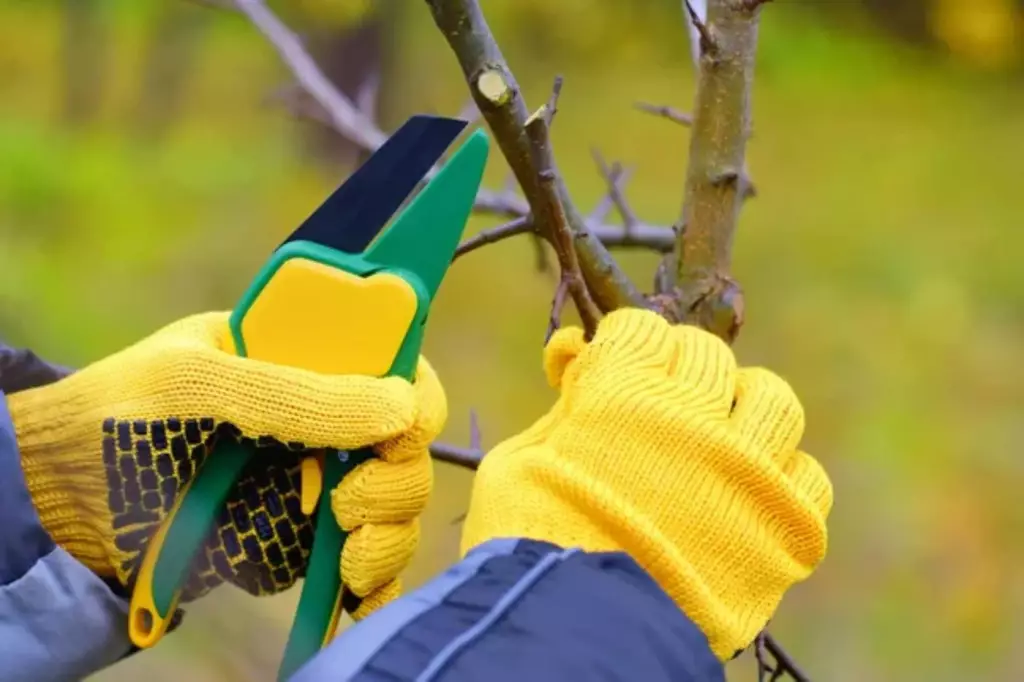
Early spring pruning helps shape the trees for better access
Early spring pruning allows for the shaping and training of the tree's structure before the growing season is fully underway. This helps in maintaining an open canopy, reducing the risk of disease and allowing for easier maintenance and harvesting.
It also allows for better visibility of any potential issues that may have developed during the winter months.
Pruning during early spring reduces stress on the tree
Pruning during early spring minimizes the stress on the tree compared to pruning during other times of the year. The tree is actively preparing for the growing season, and pruning at this time can be less stressful than during periods of active growth.
The Proper Way to Prune Macadamia Trees
Pruning a macadamia nut tree is an important aspect of its care and maintenance. Here's a detailed guide on how to prune a macadamia nut tree:
Know the right timing
The best time to prune a macadamia nut tree is during the late winter or early spring when the tree is dormant. This is typically between late August and early October in the Northern Hemisphere. It is important to prune your macadamia trees at the right time as it can affect your fruit production.
Use clean and sharp tools
Below is a list of some of the tools needed for pruning macadamia trees:
- Pruning shears or loppers: Use sharp and clean tools to make precise cuts without damaging the tree.
- Hand saw: A sharp saw with fine teeth is essential for cutting larger branches.
- Pole pruner: Ideal for reaching higher branches without the need for a ladder.
- Gloves: Protect your hands with a good pair of gloves that offer a strong grip and durability.
- Safety gear: Wear appropriate eye protection and a helmet when using saws and loppers.
- Disinfectant: Have a disinfectant on hand to sterilize tools between uses and prevent disease spread.
Remove dead or diseased branches
Begin by carefully inspecting the tree for any dead, diseased, or damaged branches. Look for signs such as a lack of leaves, discoloration, or any indications of disease or pest infestation.
Using sharp and clean pruning shears, carefully remove these branches to promote the overall health and vitality of the tree. Be sure to make clean cuts close to the collar of the branch without causing unnecessary damage to the surrounding area.
Properly disposing of the removed branches will help prevent the spread of any potential diseases or pests.
Thin-out crowded branches
Look for any branches that are crossing or rubbing against each other. These can create wounds and provide entry points for diseases. Remove the weaker or less desirable branches to allow better air circulation and sunlight penetration.
Control size and shape
Macadamia nut trees can grow quite large, so you may need to control their size and shape through pruning. Trim back any excessively long branches to maintain the desired size and shape of the tree.
Encourage fruit production
Pruning can also help encourage fruit production. By selectively removing non-fruiting or unproductive branches, the tree's energy can be redirected to enhance the development of nuts.
This process stimulates the tree to focus its resources on the growth and maturation of the fruit, ultimately leading to a more abundant and healthy yield.
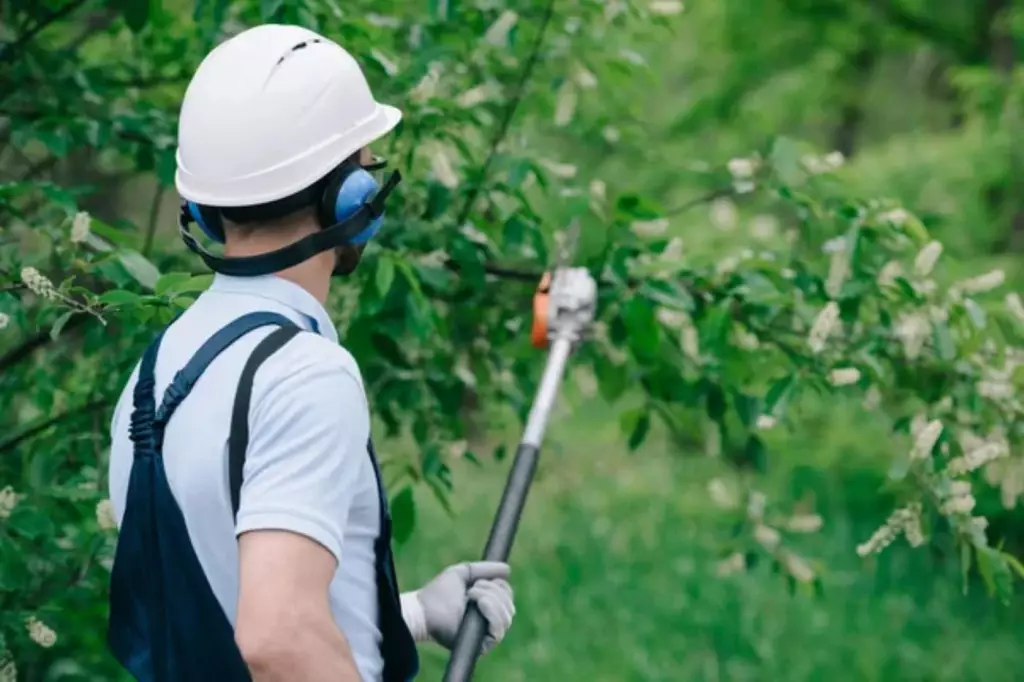
Avoid over-pruning
While regular pruning is part of maintaining and promoting healthy growth and fruit production in macadamias, it's equally important to steer clear of over-pruning.
Over-pruning can lead to stress in the tree, which in turn diminishes its capacity to yield a bountiful harvest of nuts. Therefore, exercising caution and restraint in pruning practices is key to ensuring the long-term health and productivity of macadamia trees.
How to Prune Young Macadamia Trees
For young macadamia trees, the focus should be on shaping the tree. In the first few years, emphasize creating a strong central leader and evenly spaced lateral branches. Light pruning to remove any non-productive wood can promote a healthier, more robust structure for future growth.
During the dormant season, typically in late winter or early spring, begin by inspecting the tree for any dead, damaged, or diseased branches.
These should be pruned back to the nearest healthy growth point or the main trunk. Removing these branches will improve the overall health of the tree and prevent the spread of disease.
Next, evaluate the spacing and angle of the main branches. Aim to have well-spaced branches that are evenly distributed around the tree to allow for good light penetration and air circulation. Remove any branches that are growing too closely together or crossing each other.
If the tree is growing taller than desired, prune back the top branches to encourage lateral growth and a more manageable height. This will also help promote a bushier and more productive tree.
You will need to make clean cuts close to the branch collar, which is the swollen area at the base of the branch. Avoid leaving stubs or making rough, jagged cuts, as these can slow down the healing process and increase the risk of infection.
After pruning, monitor the tree's growth and adjust pruning practices as needed in subsequent years. Regular maintenance pruning can help maintain the desired shape and promote fruit production as the tree matures.
How to Prune Old Macadamia Trees
Older trees often require more extensive pruning to rejuvenate them and encourage productive new growth. Here's a detailed discussion on how to prune them properly:
Identify the branches to remove
The first step in pruning old macadamia trees is to identify and remove any large, dead, or diseased branches. These branches can be a drain on the tree's resources and may also pose a safety hazard. By removing these branches, you can improve the overall health and appearance of the tree.
Thin out the canopy
After removing the large, dead, or diseased branches, the next step is to thin out the canopy of the tree. This involves selectively removing some of the smaller branches to reduce crowding and improve air circulation within the tree. Thinning out the canopy can also help in maintaining an accessible shape for easier harvesting.
Rejuvenate the tree
By removing the old and unproductive branches and thinning out the canopy, you are essentially rejuvenating the old macadamia tree.
This process encourages the tree to put its energy into producing new growth, which can lead to increased productivity and a healthier tree overall.
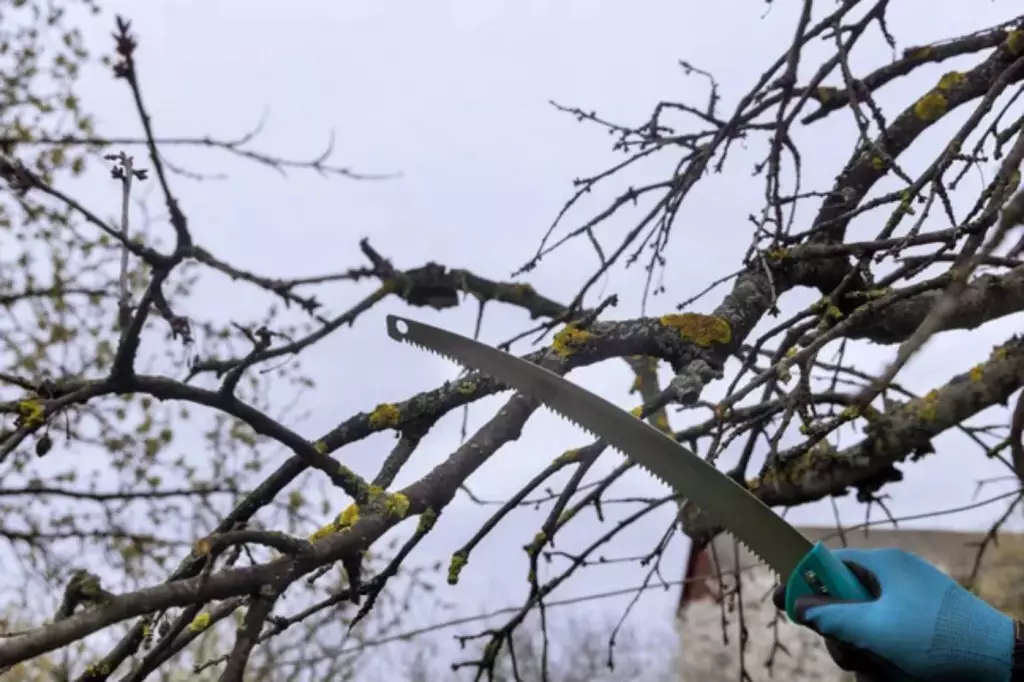
Proper Care for Macadamia Trees
In this section, we will explore how to address brown leaves on macadamia trees and identify the best fertilizer to promote their well-being.
Why your macadamia tree leaves are turning brown
When you notice your macadamia tree's leaves turning brown, you need to identify the cause to address it effectively. Brown leaves can be a symptom of several issues, including water stress, nutritional deficiencies, or disease.
| Problems | Symptoms | Action Items |
|---|---|---|
| Overwatering | Soggy, brown leaves | Reduce watering; ensure good soil drainage |
| Underwatering | Dry, crispy leaves | Increase watering during dry conditions |
| Nutrient deficiency | Pale leaves with brown edges | Fertilise twice a year, in autumn and spring |
| Disease | Spotting, leaf margin yellowing | Remove affected parts; apply fungicide if needed |
It could be related to watering issues
When macadamia trees are overwatered, their leaves may become soggy and brown. This is a result of the roots being deprived of oxygen, causing them to suffocate and ultimately leading to the browning of the leaves. Overwatering can also contribute to the development of root rot, further exacerbating the browning of the leaves.
Conversely, underwatering can also cause macadamia leaves to turn brown. When the trees do not receive an adequate amount of water, their leaves may appear dry and crispy.
This is a defense mechanism employed by the tree to conserve water and protect itself from dehydration. As a result, the lack of water can lead to the browning and eventual shedding of the leaves.
Your macadamia may need more nutrients
Nutritional needs are essential for the growth and development of any plant, including the macadamia tree. Macadamia trees require various nutrients to thrive, including nitrogen, phosphorus, potassium, calcium, magnesium, sulfur, and several micronutrients such as iron, zinc, copper, manganese, and boron.
Applying fertilizer can be an effective way to ensure that macadamia trees receive the necessary nutrients for optimal growth. Fertilizers can help replenish the soil with essential nutrients that may be lacking, especially in areas with less annual rainfall where natural nutrient replenishment may be limited.
When applying fertilizer to macadamia trees, perhaps consider first the specific nutrient requirements of the trees at different growth stages.
For example, young macadamia trees may require higher levels of phosphorus to support root development, while mature trees may benefit from a balanced fertilizer that provides a mix of essential nutrients.
You might also want to monitor the soil pH levels, as macadamia trees generally prefer slightly acidic to neutral soils. If the soil pH is not within the optimal range, it can affect the tree's ability to uptake certain nutrients, even if they are present in the soil.
In addition to fertilization, other factors such as irrigation, soil drainage, and overall soil health also play a crucial role in meeting the nutritional needs of macadamia trees.
By addressing these factors and ensuring that the trees receive the necessary nutrients, macadamia growers can promote healthy growth and maximize the productivity of their orchards.
Your tree might be diseased
Phytophthora is a genus of plant pathogens that can cause various diseases in trees, including macadamia trees. One common symptom of Phytophthora infection in macadamia trees is the browning of leaves.
This discoloration is often a result of the pathogen disrupting the normal functions of the tree, such as nutrient uptake and water transport.
When a tree is affected by a disease like Phytophthora, it is important to take action to prevent the spread of the pathogen and to help the tree recover.
Pruning affected parts of the tree can be crucial in controlling the spread of the disease. By removing infected branches or leaves, the spread of the pathogen can be limited, and the tree's overall health can be improved.
What is the best fertilizer for macadamia trees?
Your mature macadamia trees will do well with a fertilizer that has low nitrogen, low phosphorus, and high potassium content. Potassium, particularly, supports fruit quality and improves disease resistance.
At the start of the growing season, try to consider using a complete fertilizer to promote healthy growth. The recommended NPK ratio for macadamia trees is around 8:10:5. This can vary, so always try to follow the manufacturer’s guidelines for the amount to apply based on the age and size of your tree.
Here’s a simple guideline for fertilizer application:
- Young macadamia trees: Fertilize lightly to avoid burning the roots, using approximately one pound of fertilizer per year of the tree's age.
- Mature macadamia trees: Gradually increase the amount of fertilizer as your tree grows, but do not exceed 10 pounds per tree.
In addition to commercial fertilizers, organic options like green manure crops or animal manure can be beneficial. Growing green manure crops, such as clover between the rows of your orchard, enhances soil fertility and structure, increasing nutrient availability for your trees.
The best time to fertilize is just before the active growth phase of your macadamia tree kicks in. This way, the nutrients are available when the tree needs them the most for flowering and fruiting.
Remember to water the fertilizer well after application to help distribute the nutrients to the tree’s roots. To learn more about how balanced fertilization promotes healthy growth and flowering in macadamia trees, read this article.

